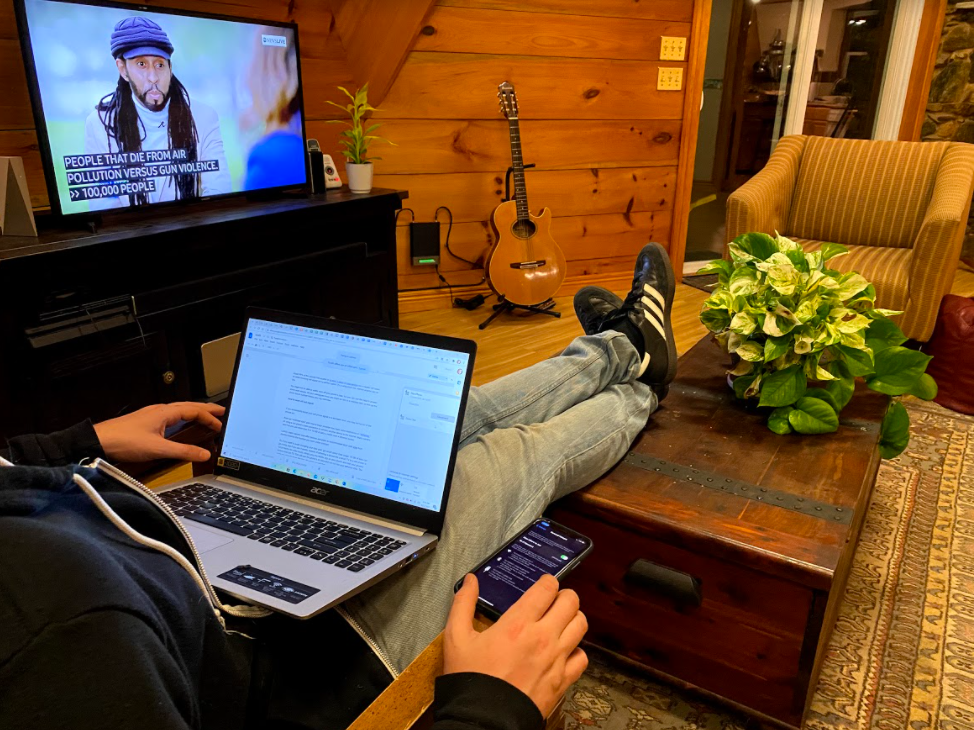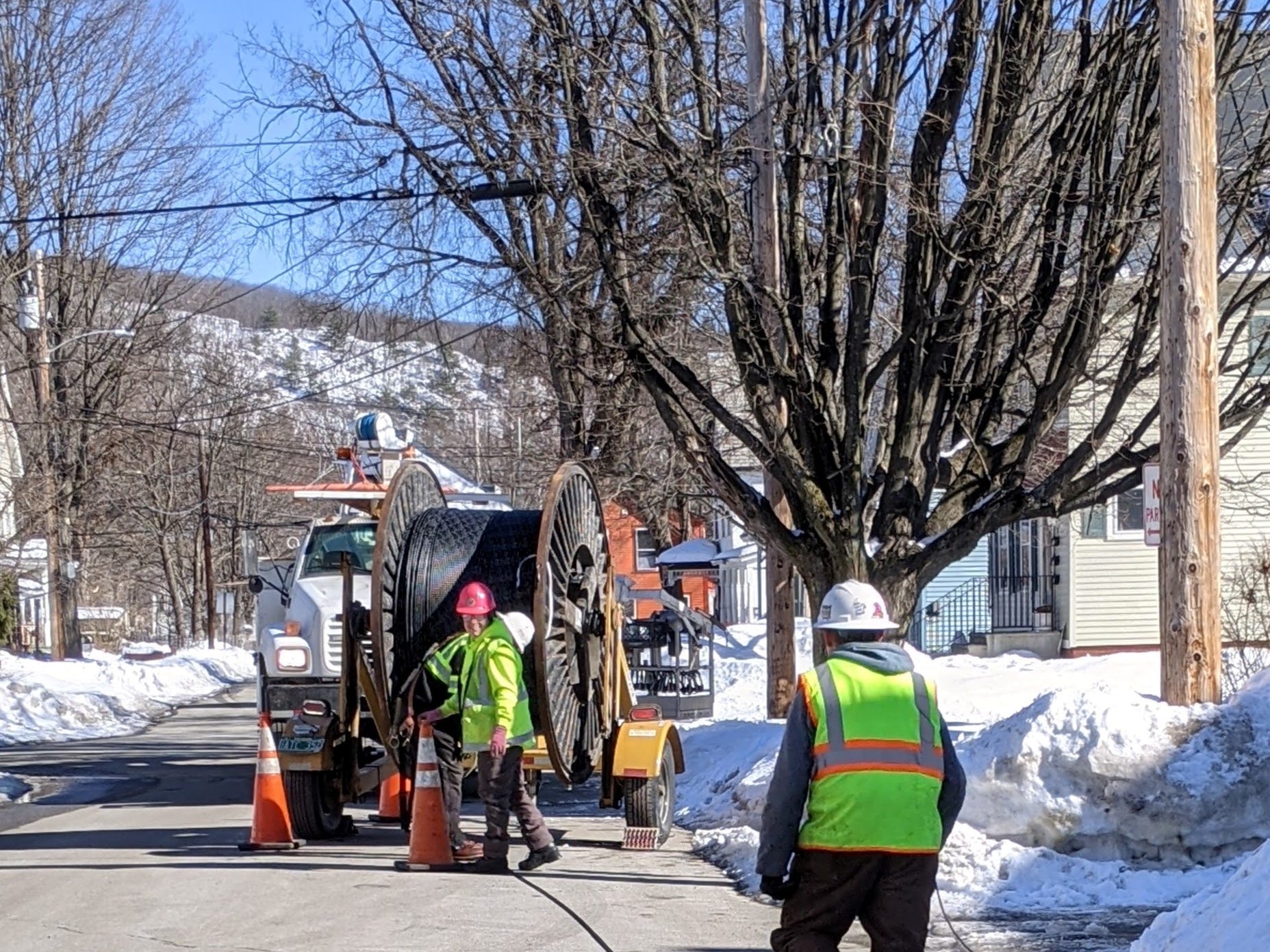
Alex Lockie
- Alex Lockie recently moved out of New York City into a home in rural southern Vermont.
- He had to test out how to establish a strong internet connection to be able to work from home.
- From satellite internet, to boosting cell phone signal, to jimmying together some wild antenna rigs, he's seen or tried just about everything.
- See more stories on Insider's business page.
Great news: In 2021, it's technically and professionally possible to work remotely from just about any address in the US – as long as you have good internet service.
But what if you don't?
About 19 million Americans lack access to the internet at broadband speeds, with 14.5 million of them living in rural areas.
Your dream house in the country might not have good internet options unless you get a little creative. As someone who just went through the struggle of establishing a work-from-home quality connection in a rural place with no wired internet or cell phone signal, I can tell you that troubleshooting a connection in the sticks is difficult, but ultimately doable.
From old faithful satellite internet, to boosting cell phone signal, to jimmying together some wild antenna rigs, I've seen or tried just about everything.
Here's how to establish a work-from-homeable internet connection from any address in the union.
Satellite internet, a gift and a curse

Alex Lockie
Satellite internet will work from just about anywhere. Providers like Hughes Net and Viasat provide speeds of up to 25 mbps on downloads and 3 mbps for uploads. This is about 80% lower than the average speed across the US, which sits at around 120 mbps. Big downloads can take a while, but for web browsing and sending and receiving moderate amounts of data, it'll do. Also, Hughes Net or Viasat can probably get a technician out to install the dish on your house within five business days. Satellite internet is almost a one-punch knockout as far as rural connections go … almost.
Because your data is flying to a satellite dish and back, there's a noticeable .7 to .9 of a second of latency with satellite internet. Prepare to be even more annoying on Zoom calls than you ever thought possible. Also, satellite internet providers usually have a soft data cap, after which you'll have to pay about $3 a GB extra. Finally, satellite internet gets worse with the weather; snow, clouds, rain and storms will all hurt performance.
Satellite internet costs about $70 to $150 a month depending on the provider and how much data you use, plus an install or equipment rental cost that can get up to $400. But, because satellite internet makes you sound awful on calls and can drop out at any time due to weather, you'll need to augment your connection.
There's a small chance that Elon Musk has already saved you, or is about to

Alex Lockie
In my case, my internet woes just about ended when I was selected for the Starlink beta test. Starlink, which is internet service from Elon Musk's SpaceX, is satellite internet that relies on tons of tiny satellites orbiting closer to earth, so there's no noticeable lag or data caps.
Starlink is a slam dunk, but it's only beta testing in the very northern part of the US. For now, there's not much you can do besides sign up for the beta and hope.
Without latency-free internet, you'll need to find a way to augment your satellite internet connection with landlines or cell signal.
How to measure a home's cell signal

Alex Lockie/Screenshot: Cell Mapper
If the home has strong data service filling the bars on your cell phone, then congrats: Major cell phone providers have hotspot devices and data plans that will hook you up for good.
But say you want to work from a house where your phone gets zero bars and doesn't say "LTE" or "3G" or "4G" in the corner. Then what?
Luckily, there are still products for you, but they're a little more off the beaten path. You're going to need a cell phone signal booster, and the best way to determine which is to do a field test.
SignalBoosters, a company that sells cell phone signal boosting kits, has published a really good guide to measuring cell phone signal with your smartphone. Basically, via Android apps or going deep into the settings of your iPhone, you can get a look your signal measured in "decibels," which is much more accurate than reading the bars.
A great cell phone signal measures in at about -50 decibels. Awful or nonexistent cell phone signal comes in at about -120, and it starts getting pretty unusable around -90.
How to boost a cell phone signal

Alex Lockie
If your signal is just a bit weak, products like Unlimitedville promise a hassle-free experience for users. Unlimitedville sells users a small MoFi box that amplifies incoming cell signals and turns it into a usable WiFi network like any other. I tried Unlimitedville and found the MoFi box severely underpowered, and the $249 monthly bill to be astronomical.
Frankly, you're better off buying your own cell signal booster and working out the data costs with your carrier.
My signal was really weak, so I bought the WeBoost Installed Home Complete, the only commercial cell signal booster that comes with a professional install included, for about $1,200. The system can jack up cell signal by up to 72 decibels and provide an area of up to 7,500 sq feet with boosted cell service by using an outdoor directional antenna pointed at the nearest cell tower and an indoor amplifier.
Ultimately, even the big dog booster didn't completely solve my problems. I get 2-3 bars and some choppy data and voice calls. I plan to raise the antenna up on a 10 foot pole to increase the range and make my house look even more ridiculous.
About 99% of the country has access to at least 3 mbps of data service via a nearby cell tower, so while boosting cell signal isn't a perfect option, it's a ubiquitous one. Almost anyone can do this.
You might not be able to solely work off your phone's data, but you can use the data to answer some work emails, let your colleagues know you might be late to a meeting later, or look up the Zoom dial-in number before your big interview.
How to work off cell signal

Alex Lockie
If you successfully boost your cell phone signal to a workable level, you may not be out of the woods yet.
Even an "unlimited data" plan from a major provider may have some restrictions on "tethering," or using a cell phone's data connection to connect another device to the internet. Many carriers won't let you use more than 5 or 10 GB of data a month over a tethered device.
Luckily, major carriers now offer devices and plans to accommodate large data asks from devices besides the handset you have under contract. Verizon's plan costs $40-$60.
Or, if you want to avoid changing your data plan, get smart about data usage. 10 GB of data can go a long way if you use it wisely. Instead of tethering a device like a smart TV to a cell phone to watch Netflix for a few hours, simply play the Netflix app on your phone and cast your phone's screen onto the TV. This will use the phone's own data and not cut into your tethered data. The more you look for tricks like this, the more you will find.
Landlines and DSL

Alex Lockie
A solid phone line can make up for satellite internet's bad lag time, and it's relatively easy to get. Telephone wires are more common than broadband cable on many power lines in rural America. At our address, we're also eligible for a 3 mbps DSL connection from our phone provider for $30 a month.
The 3 mbps number seems a bit sad, but our neighbor uses it to check his email and even do some low-resolution Zoom calls for work. Because DSL uses a wired connection, it has no lag, making it a solid compliment to satellite internet connections.
But with a landline, you may not even need DSL.
We keep a notebook with important numbers written down on the landline phone. Even if the power goes out, I can look up my boss' number and keep him in the loop.
Beg, borrow, appeal

Alex Lockie/Screenshot: Amazon
If your neighbors have good internet service and you don't, you can always proposition them to set up an antenna that beams connectivity to your house. Obviously you'd ask nicely and offer to pay, because this method works.
Long-range WiFi antennas can send signal up to 8 miles away, and it's relatively lossless.
Never give up

Courtesy of Al New
If all else fails, find out what major internet service providers cover nearby areas and reach out to them. I called Xfinity to inquire about getting broadband to my house. To my surprise, they had trucks driving down my dirt road within a week. It turned out that despite my remote setting, houses just a few miles down the road had broadband and Xfinity was considering running the lines out my way.
Xfinity said I could pay about $30,000 to get connected or I could simply wait on state or federal funds to come through. There's actually $10 billion in the recently passed American Rescue Plan to extend broadband to rural America, and many rural states have money set aside for this too.
Waiting for Xfinity could take years, but I was glad to have put in a request.
When I left NYC to live in the country, I never thought I'd be begging to deal with Xfinity again, but life is funny in that way.
Take it from me: Don't let a bad internet connection stop you from living in a place that feels like home. Where there is a will, there's a way - and the arc of history bends towards more WiFi.
